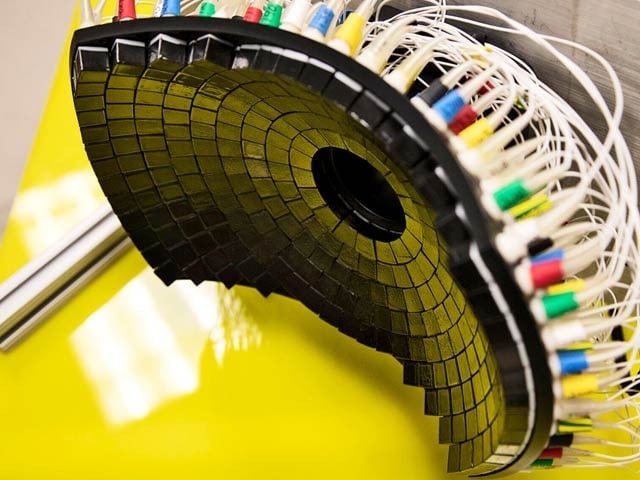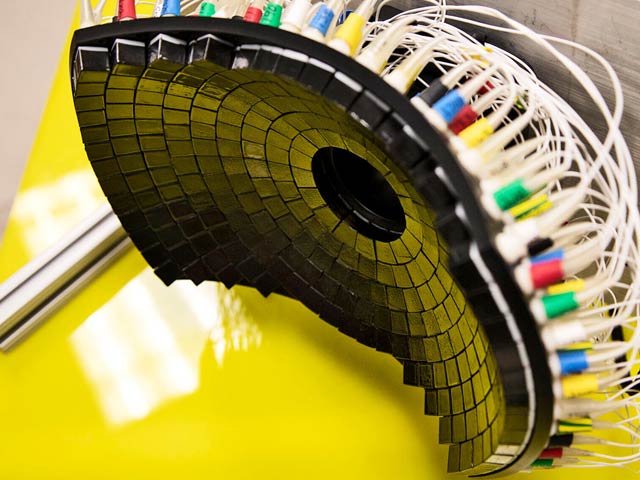
In the image, 260 electrodes or elements emitting 700 kilohertz sound waves are installed which can attack the cancer twice. Photo: Courtesy of University of Michigan
Michigan: A surprising treatment with sound waves has been successfully tested in mice with cancer. This important work has been done at the University of Michigan.
According to scientists, this process is called ‘histotripsy’ which attacks the cancer in two ways. First, it removes a kind of cell wall mask from the cancer cells hiding in the body, after which the cancer cells become visible and treatment becomes easier. Secondly, this process boosts the body’s immune system and reduces the need for radiotherapy or chemotherapy.
Although histotropy is not a new technology, experts have now done extensive research on its effects on the nervous system. It has destroyed cancerous tumors in the liver of rats. Amazingly, the cancerous tumors and cells were completely destroyed by the sound waves. 80% of the mice became cancer free and the immune system was strengthened and the cancer did not recur.
The research is published in Frontiers in Immunology. In histotropsy, sound waves break down the walls of cancer cells and release the cancer-causing antigen inside, which prepares the body to fight the cancer. This process does not occur in chemotherapy and radiotherapy. Even when the antigen from one mouse was injected into another mouse, it also developed immunity against cancer and acted as a cancer vaccine.
This important work has been done by Professor Zen Shu who has been researching histotropy for the past 22 years. However, research on other aspects is still pending.
(function(d, s, id){
var js, fjs = d.getElementsByTagName(s)[0];
if (d.getElementById(id)) {return;}
js = d.createElement(s); js.id = id;
js.src = “//connect.facebook.net/en_US/sdk.js#xfbml=1&version=v2.3&appId=770767426360150”;
fjs.parentNode.insertBefore(js, fjs);
}(document, ‘script’, ‘facebook-jssdk’));
(function(d, s, id) {
var js, fjs = d.getElementsByTagName(s)[0];
if (d.getElementById(id)) return;
js = d.createElement(s); js.id = id;
js.src = “//connect.facebook.net/en_GB/sdk.js#xfbml=1&version=v2.7”;
fjs.parentNode.insertBefore(js, fjs);
}(document, ‘script’, ‘facebook-jssdk’));



